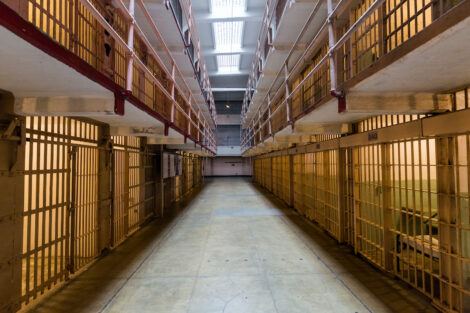December 18, 2020 – As states implement plans for allocating COVID-19 vaccines, the question of whether to prioritize incarcerated people to be among the first groups of recipients—along with health care workers and the elderly—looms large. Three Harvard T.H. Chan School of Public Health experts share their views on the issue.
Emma Accorsi
Ph.D. ’22, epidemiology, Center for Communicable Disease Dynamics
From an epidemiological perspective, COVID-19 vaccination of incarcerated and detained individuals is an efficient public health strategy and must be prioritized. Social distancing is impossible for individuals who are living in crowded conditions. Crowding, combined with reduced access to critical public health tools, including personal protective equipment and testing, has resulted in a rate of infection in state and federal prisons that is 5.5 times higher than that in the general population, according to a recent study in JAMA.
Additionally, according to data from the U.S. Department of Justice, about 40% of those in U.S. prisons and jails have a chronic medical condition, such as hypertension, asthma, and diabetes, which makes them vulnerable to worse COVID-19 outcomes, including death. Prisons, jails, and detention centers do not have the medical facilities to treat severe COVID-19 cases. These individuals are brought to nearby hospitals, creating dangerous conditions for the staff involved in transporting highly infectious COVID-19 patients, critically delaying the care of severely ill individuals, and stressing local hospitals. Many facilities are located in rural areas where there are fewer hospital resources overall and hospitals are becoming increasingly overwhelmed.
The numerous COVID-19 outbreaks in jails, prisons, and detention centers we’ve seen during the last nine months have shown that our systems are failing to keep infection out, with devastating results. Prioritizing incarcerated and detained individuals for COVID-19 vaccinations is the smart public health strategy.
Memo Cedeno Laurent
Associate Director, Healthy Buildings Program
Correctional facilities by design are poorly ventilated spaces. They have some of the lowest supply rates of outdoor air per person and per square foot. That’s very problematic when thinking about how infectious diseases spread in indoor environments.
But the other important part of the puzzle from a healthy buildings perspective is occupant density. We’ve seen in our own studies in college dormitories that the more people there are per square foot, the easier it is for airborne infectious diseases such as influenza and other respiratory infections to spread.
By design, correctional facilities have high occupant densities and the reality is that many prisons are overcrowded. Lastly, it’s important to remember that people in prison are not living on an island. There are guards and visitors and other people who enter these facilities every day from the outside. So based on those factors alone, it seems like a good idea to ensure that incarcerated people be prioritized for vaccination.
Natalia Linos
Executive Director, FXB Center for Health & Human Rights
Incarcerated people have little control over their ability to follow public health guidance to protect themselves from COVID-19, such as social distancing, and even the most basic precautions, such as the ability to wash with soap, has not always been guaranteed. Similar to others living in congregate settings, they are at increased risk of COVID-19, and should be given priority when it comes to a COVID-19 vaccine as has been decided in some places, including here in Massachusetts.
From a human rights perspective it’s important to emphasize that governments have a responsibility to protect incarcerated people and provide adequate health care. Given the large number of cluster outbreaks and deaths that have been documented in prisons and jails, a COVID-19 vaccine—especially for a population that on average has poorer underlying health—would fit into that category of appropriate health care. One of the challenges going forward will be communication and misinformation around vaccination policy. Something that needs to be communicated very clearly is that incarcerated people are a priority for vaccination, but that it is not mandatory. And we must ensure that there is no coercion to accept a vaccine.
Finally, while vaccines are going to be critical to stopping the spread of COVID-19, they are not the only strategy. Making vaccines available to those in prisons and jails does not remove the responsibility to make these congregate settings safer through other means as well. The medical and public health community have called for decarceration efforts to reduce over-crowding, and those efforts must be supported irrespective of the vaccination policy.
photo: Shutterstock
